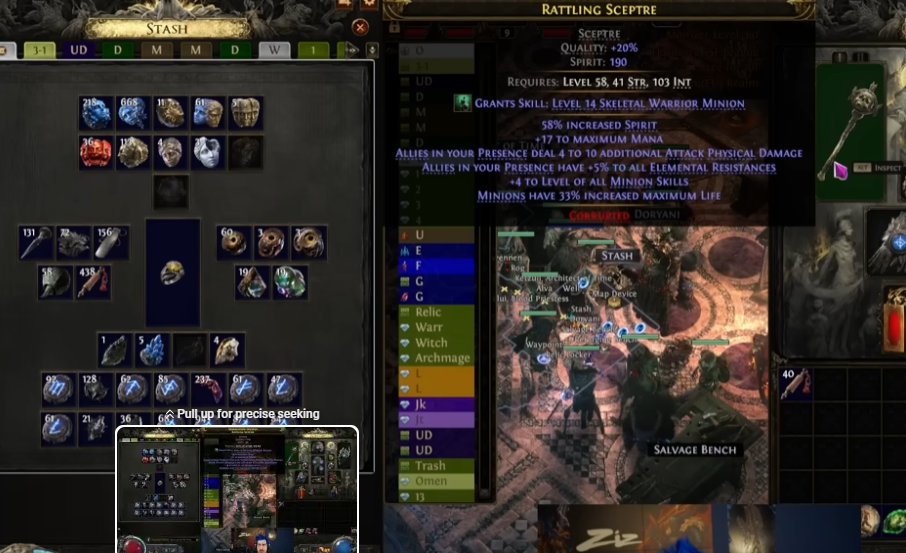Path of Exile 2 (POE 2) has introduced an exciting new era for players who enjoy the thrill of trading and currency flipping. One of the many strategies that has piqued the interest of the community is identifying rare items in the hopes of flipping them for profit. But, as with many strategies in POE 2, the question arises: Is it time-efficient to identify rare items for potential currency flips?
The Appeal of Currency Flipping
Currency flipping in POE 2 revolves around buying and selling items to make a profit, often by identifying rare items that could yield a valuable piece for reselling. These rare items are often dropped throughout the game and can range from weapons to armor, rings, and amulets. The allure of currency flipping lies in the fact that the POE 2 economy is ever-changing, and certain items can quickly become valuable due to demand shifts, builds, or meta changes.
Identifying rares, especially with the right modifiers, can yield some surprising and lucrative rewards, whether it's crafting potential or simply a high demand from players. Many players have found success by identifying items quickly, flipping them for POE 2 currency, and repeating the process. But is it truly time-efficient?
Time Investment vs. Reward
When considering the time efficiency of identifying rares for currency flips, several factors come into play. First, there's the time spent actively identifying and appraising each rare item you find. Identifying rares is an investment of both time and resources—each identification requires an orb or a currency item, which in itself is an opportunity cost. In some cases, players can spend a lot of time identifying multiple rares only to find that their efforts are not immediately profitable.
Then, there’s the challenge of properly evaluating the value of an item. POE 2 currency values can fluctuate greatly depending on demand and build popularity, so determining whether a rare item is worth flipping often requires a deep understanding of current market trends. For example, some rares might seem unremarkable but are suddenly sought after due to the rise of a new build, while others might have been overpriced or undervalued.
Additionally, there’s the question of opportunity cost. While identifying and flipping rares can be profitable, it might not always be the most efficient way to make POE 2 currency. Many players find that investing their time in other activities, such as crafting, mapping, or running high-level content, may provide a more consistent return on investment. Crafting, for instance, allows players to create custom items that might cater directly to the market's needs, potentially yielding a higher profit than flipping identified rares.
The Market Volatility Factor
The POE 2 currency market can be volatile, with significant shifts in item values that happen quickly. This volatility means that what may be worth flipping today could lose value tomorrow, or vice versa. Players who choose to identify rares must have a good understanding of when to sell and when to hold onto their items.
Many players rely on tools like online trading platforms and price-checking websites to stay updated on current market trends. This, however, adds another layer of time investment. Constantly scanning the market, updating prices, and watching for the right moment to sell can eat into the potential gains that come from flipping rares.
Alternatives to IDing Rares
If identifying rares for currency flips isn’t the most time-efficient strategy, what alternatives exist? Some players prefer to focus on farming valuable crafting materials, running maps with high mob density for guaranteed loot, or creating items with higher value through crafting. These approaches may allow for more consistent returns, as the items created or gathered are more in line with established POE 2 market trends.
Another option is to focus on a specific niche in the economy, such as farming a particular item type or providing services like carrying others through content. These methods can often be more predictable and less reliant on market shifts, making them more time-efficient in some cases.
While flipping rares for POE 2 currency can be a profitable activity, it’s not always the most time-efficient option. Identifying items, evaluating their value, and managing the volatility of the currency market require a significant investment of time. For players seeking consistency, other strategies like crafting or farming may provide more reliable returns. However, for those with a keen eye for market trends and an ability to quickly identify valuable rares, flipping can still be a rewarding endeavor.


